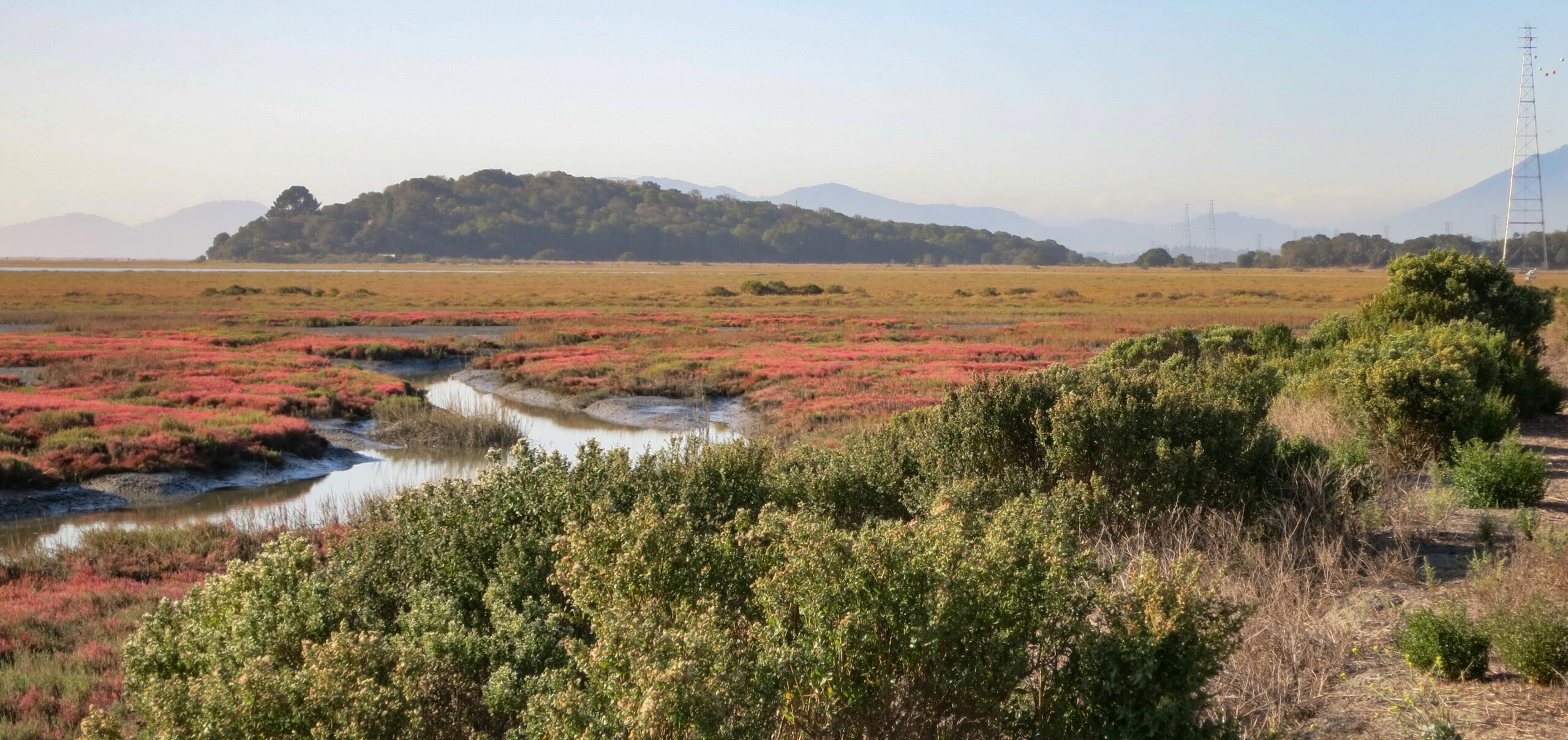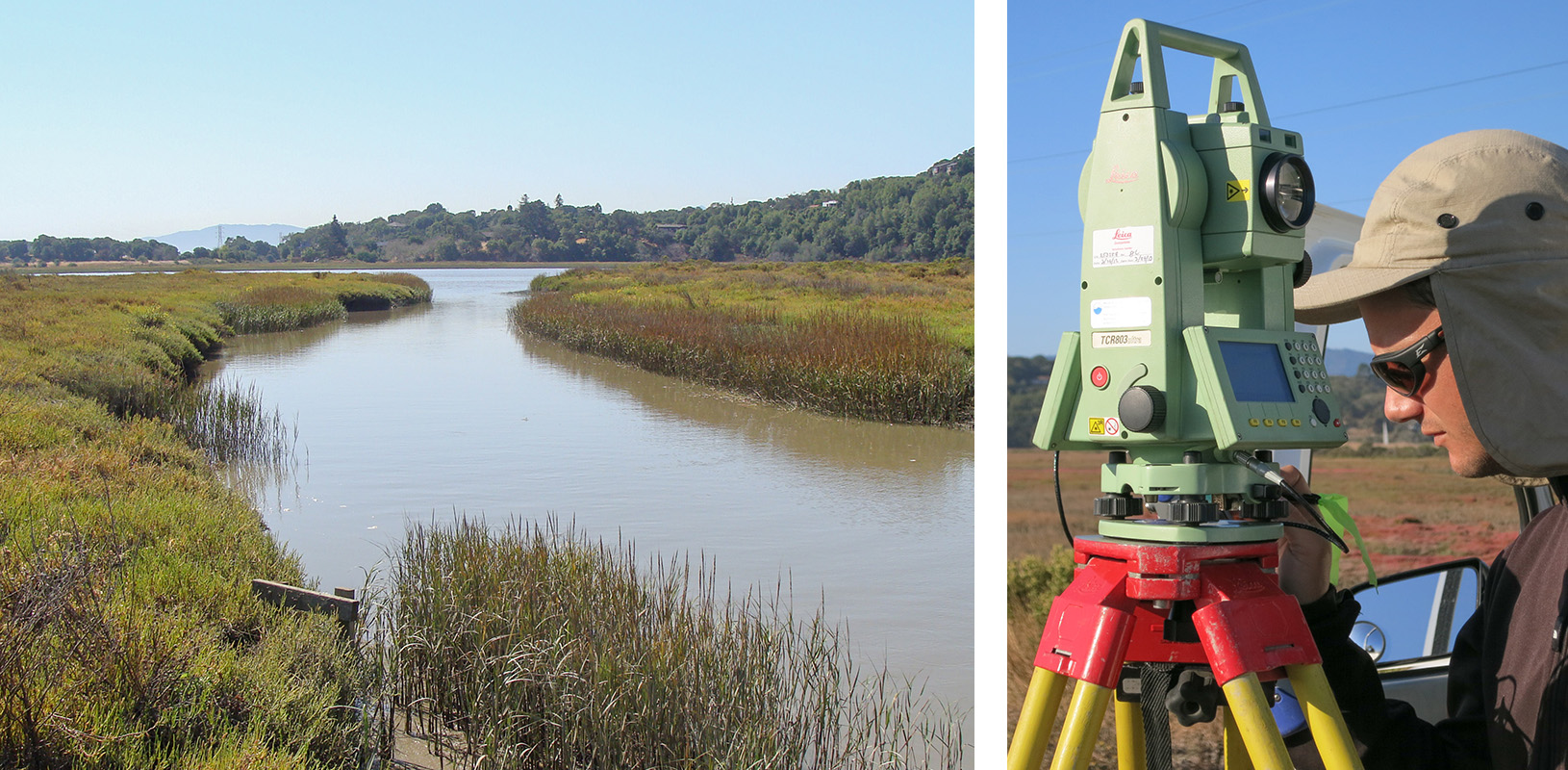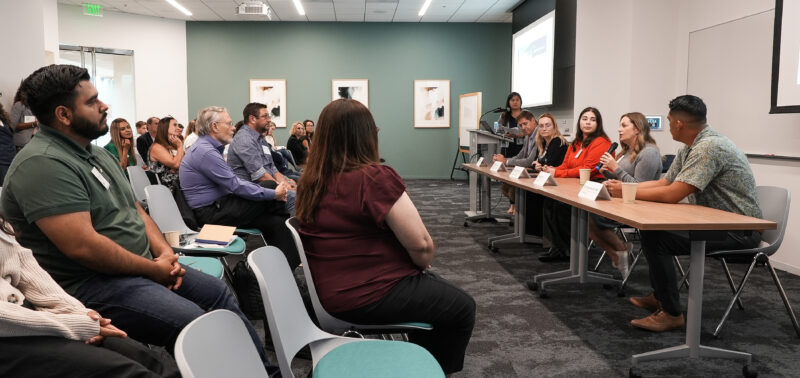Building on momentum from September’s Groundwater Accounting Platform Showcase, ESA, the California Water Data Consortium,...

Sonoma Baylands Wetland Restoration Project
The Sonoma Baylands Wetland Restoration Project (Sonoma Baylands) has restored 348 acres of formerly diked farmland in southwestern Sonoma County and is considered one of San Francisco Bay’s pioneering restoration projects.
Why does this project matter?
The site, once part of an extensive tidal wetland system along the north margin of San Pablo Bay, was diked and drained for agriculture in the late 1800’s. The design approach was to create appropriate conditions whereby a marsh would evolve in response to natural processes. The design and implementation planned for natural sedimentation to raise the marshplain above dredged material placed on the site and to allow tidal channels to form naturally as tidal exchange increased and native marsh vegetation was established within the restoration site.
What is ESA doing to help?
ESA worked with the California Coastal Conservancy, the Sonoma Land Trust, and the Army Corp of Engineers to prepare the hydrology and geomorphology components of the restoration design. Before opening the site to tidal action, the team determined that clean dredged materials could be used to raise its surface elevation in order to speed the marsh’s geologic and biologic evolution. Using material dredged from a shipping channel project for the Port of Oakland, Sonoma Baylands became one of the first restoration project in the Bay Area to use dredged sediment. The team also pioneered the practice of allowing ecologic goals to determine the amount and placement of the dredged material. Due to its large size and windy environment, the design also incorporated features to limit wind wave energy within the site.

After the project’s completion in 1996, ESA conducted yearly monitoring of the restored tidal marsh through 2016. The monitoring included a combination of topographic surveying, photographic documentation, and water level monitoring to characterize the rate and pattern of outboard and inboard tidal channel erosion; changes in tidal prism, sediment deposition, and consolidation; constructed levee and peninsula subsidence, and vegetation establishment. Monitoring was also used to determine the occurrence of benthic macroinvertebrates, birds, and fish. The data gathered during the monitoring of this “First Generation” project was used to inform later second generation projects, like the Hamilton Wetlands Restoration, in the restoration design.
Connect with our team
Details
Client Sonoma Land Trust, California Coastal Conservancy, US Army Corps of Engineers San Francisco District
Location Sonoma County, California
Market Natural Resource Management
Services
Restoration
Wetland Restoration

News & Ideas
ESA uses a customized approach to help clients set sustainability goals and reduce their emissions,...
California’s Assembly Bill 1319 sets a process to assess reduced federal protections for endangered native...
In early October, ESA hosted our first-ever Permitting Symposium in Irvine, California, which brought together...
With more than 25 years of experience in the AEC industry, Maury Ballif has a...
The following speech was delivered on September 25, 2025 in Washington, DC, at the Road...









